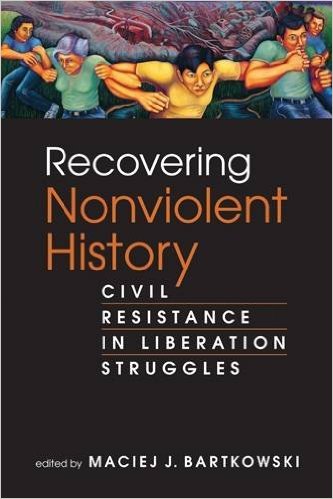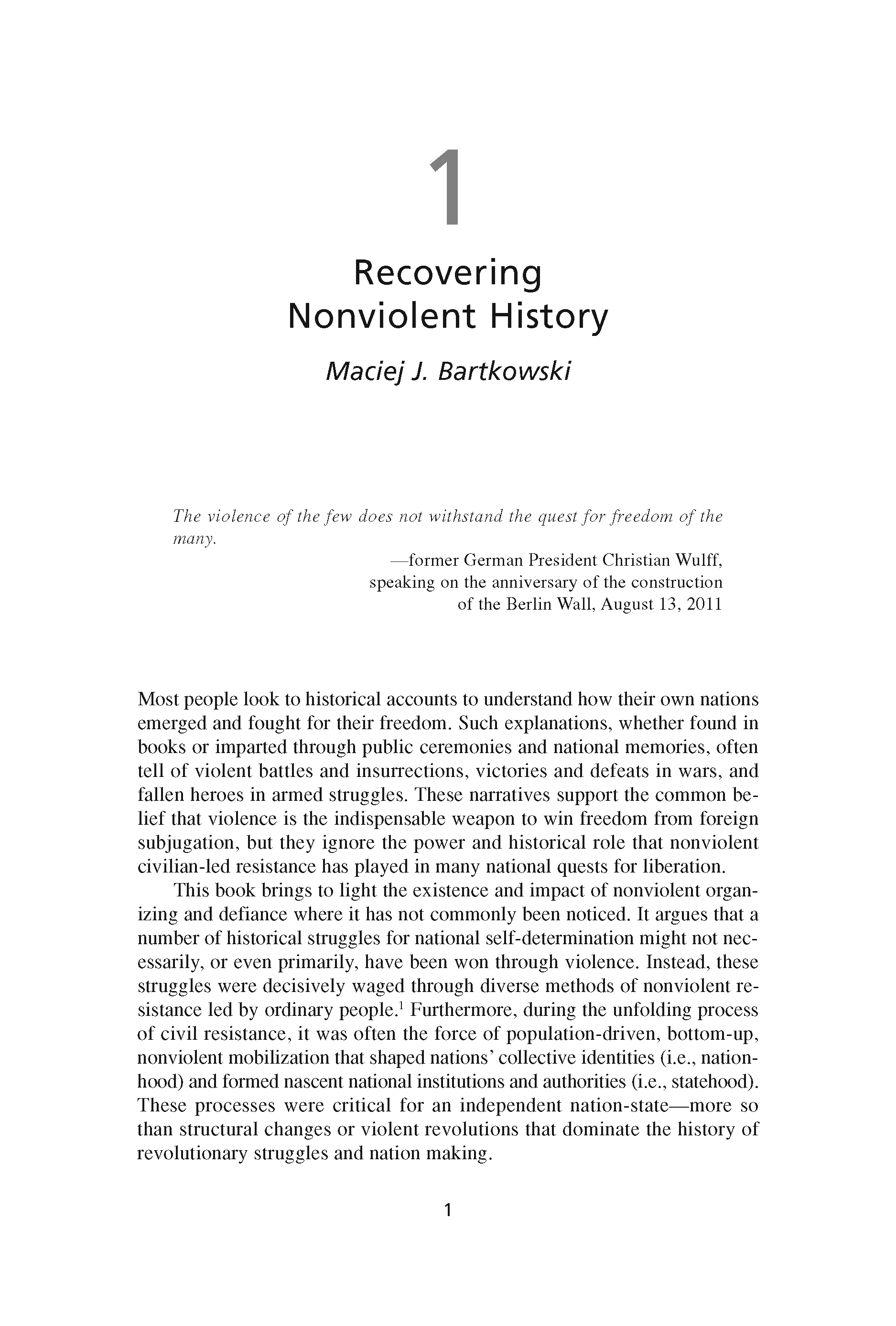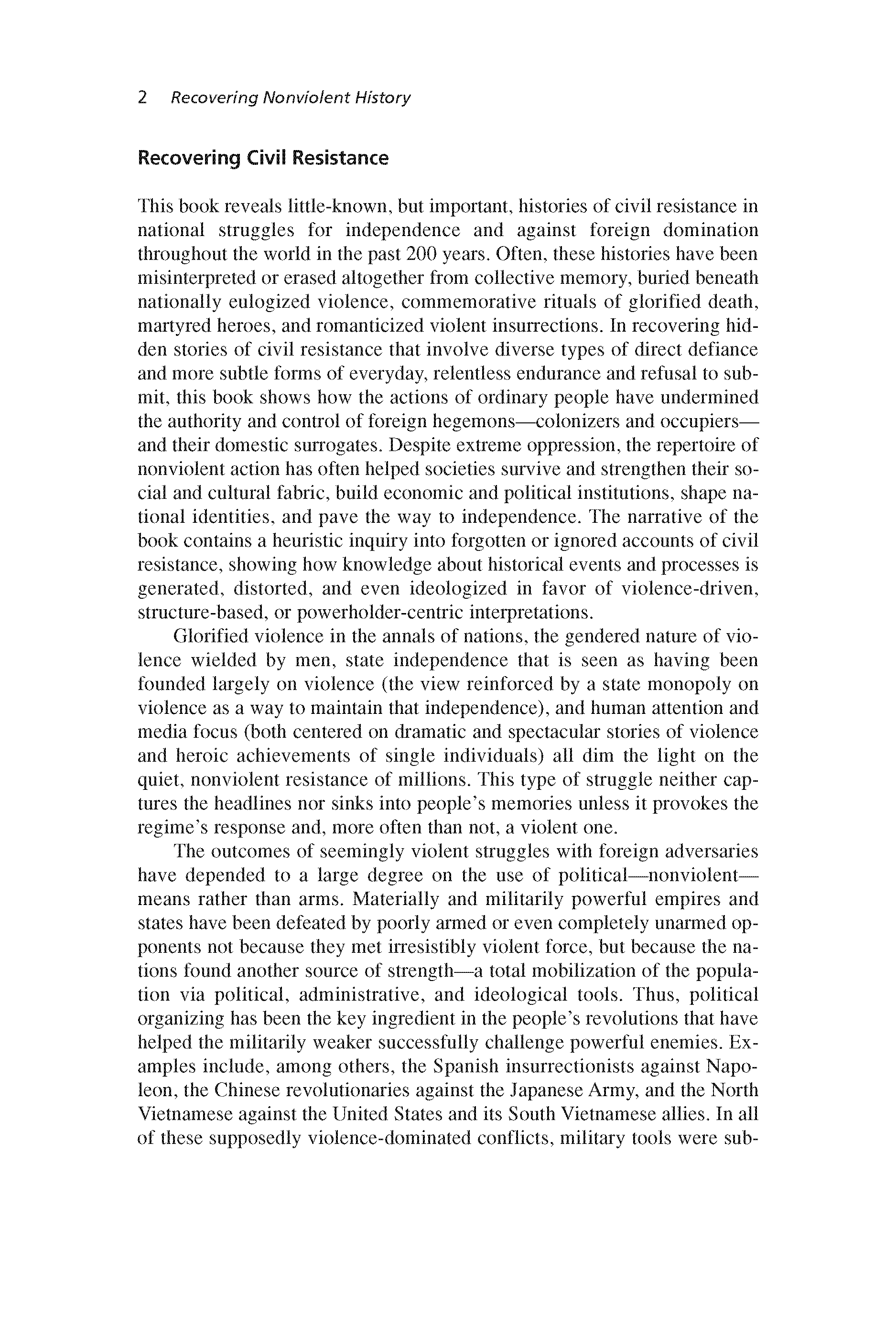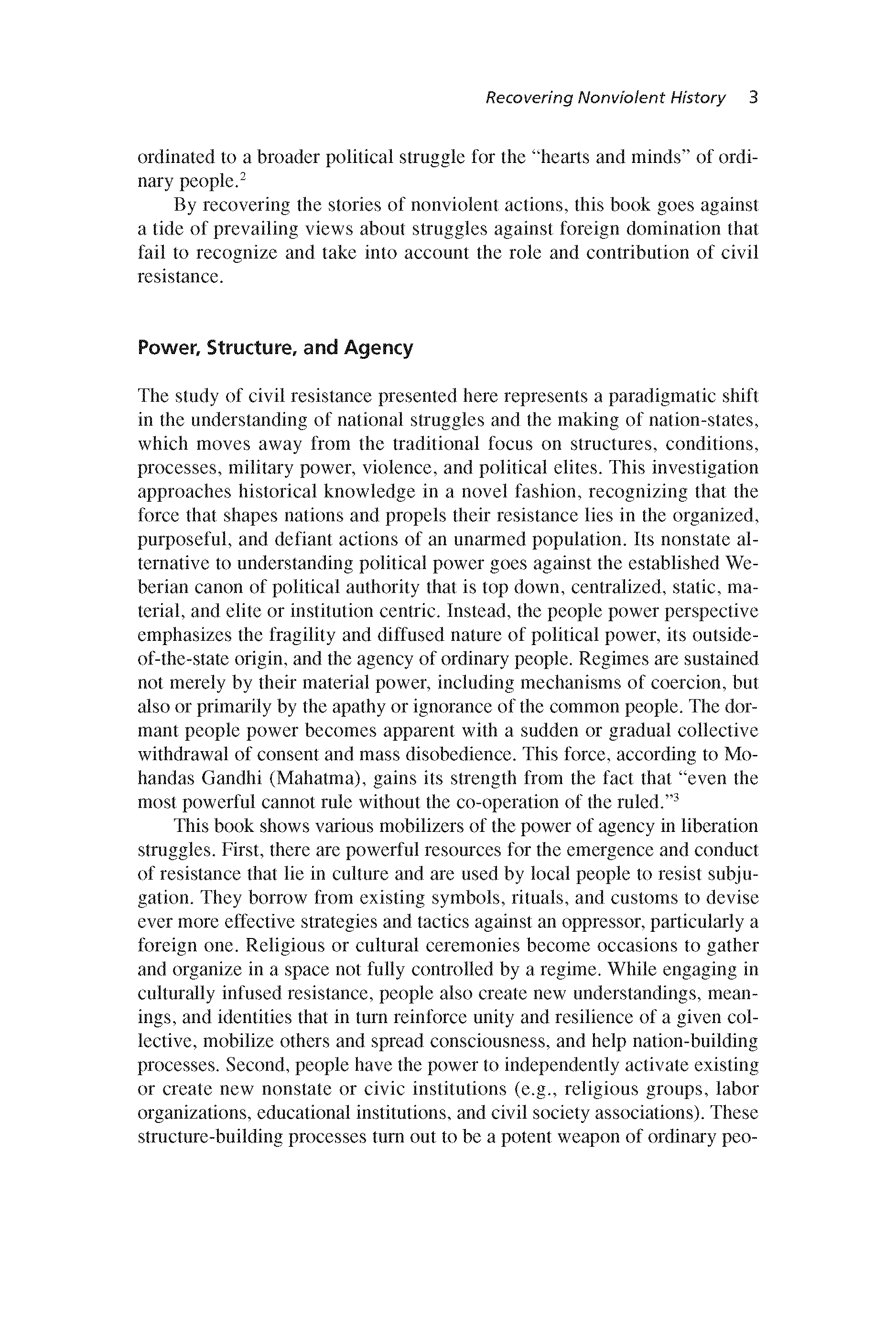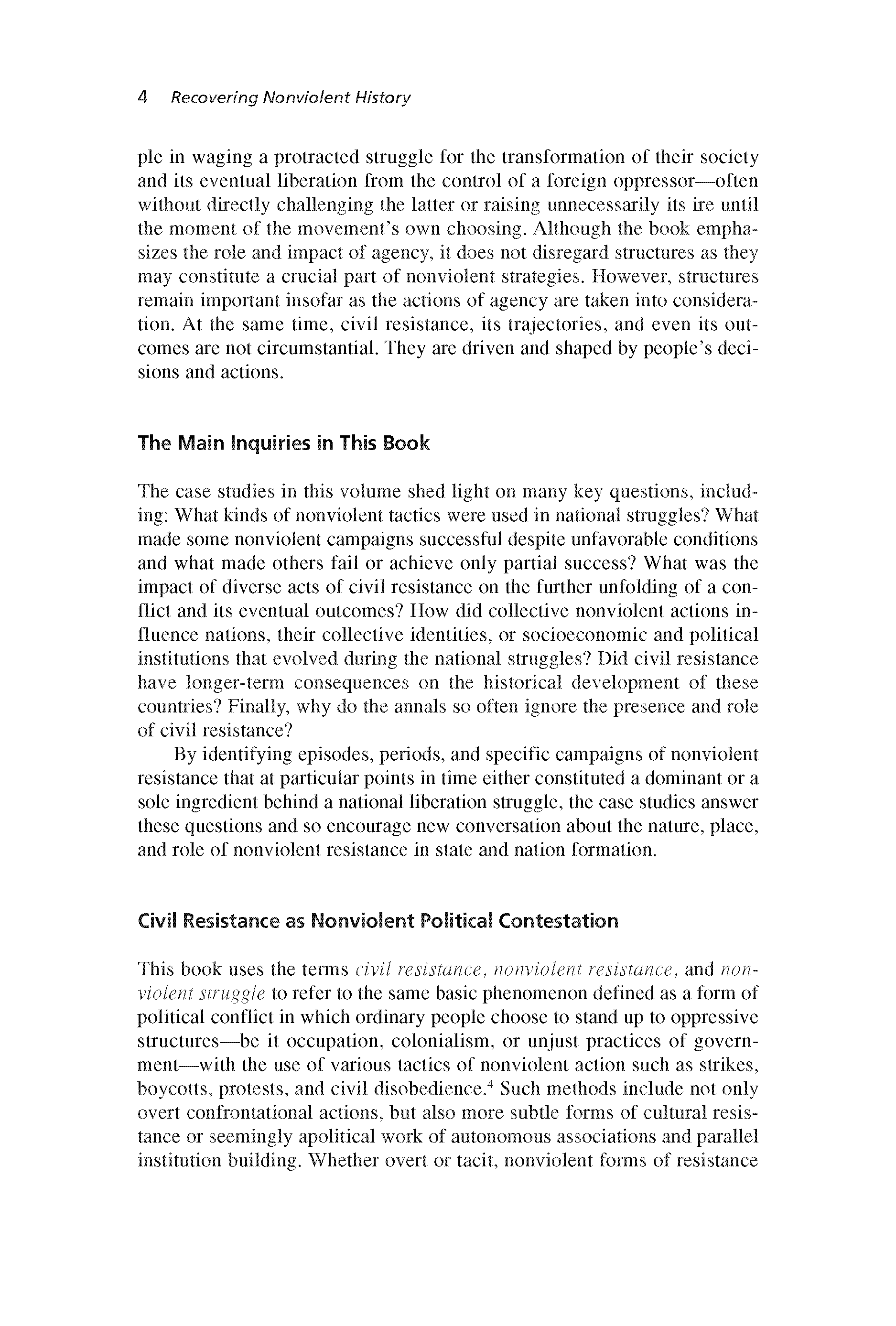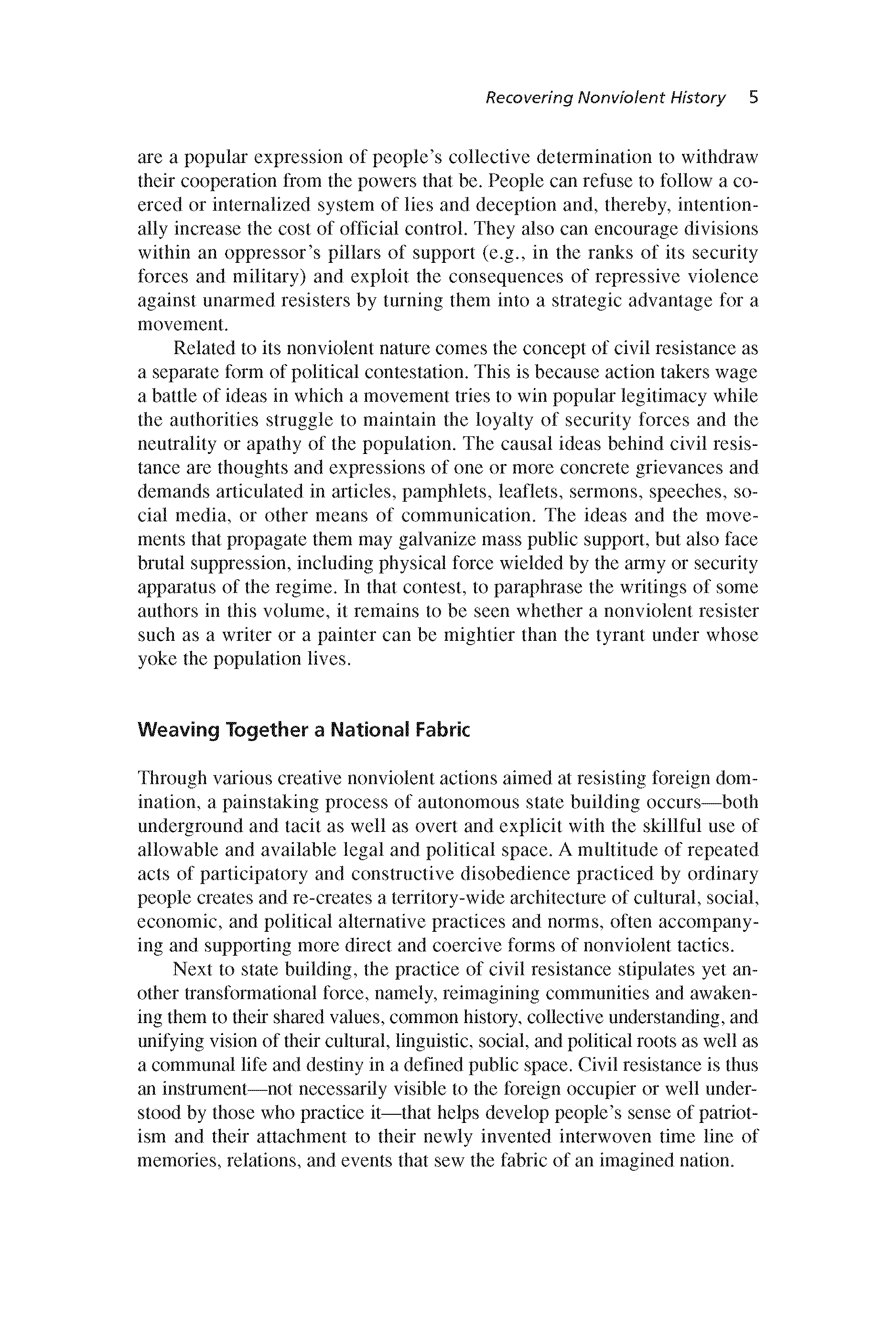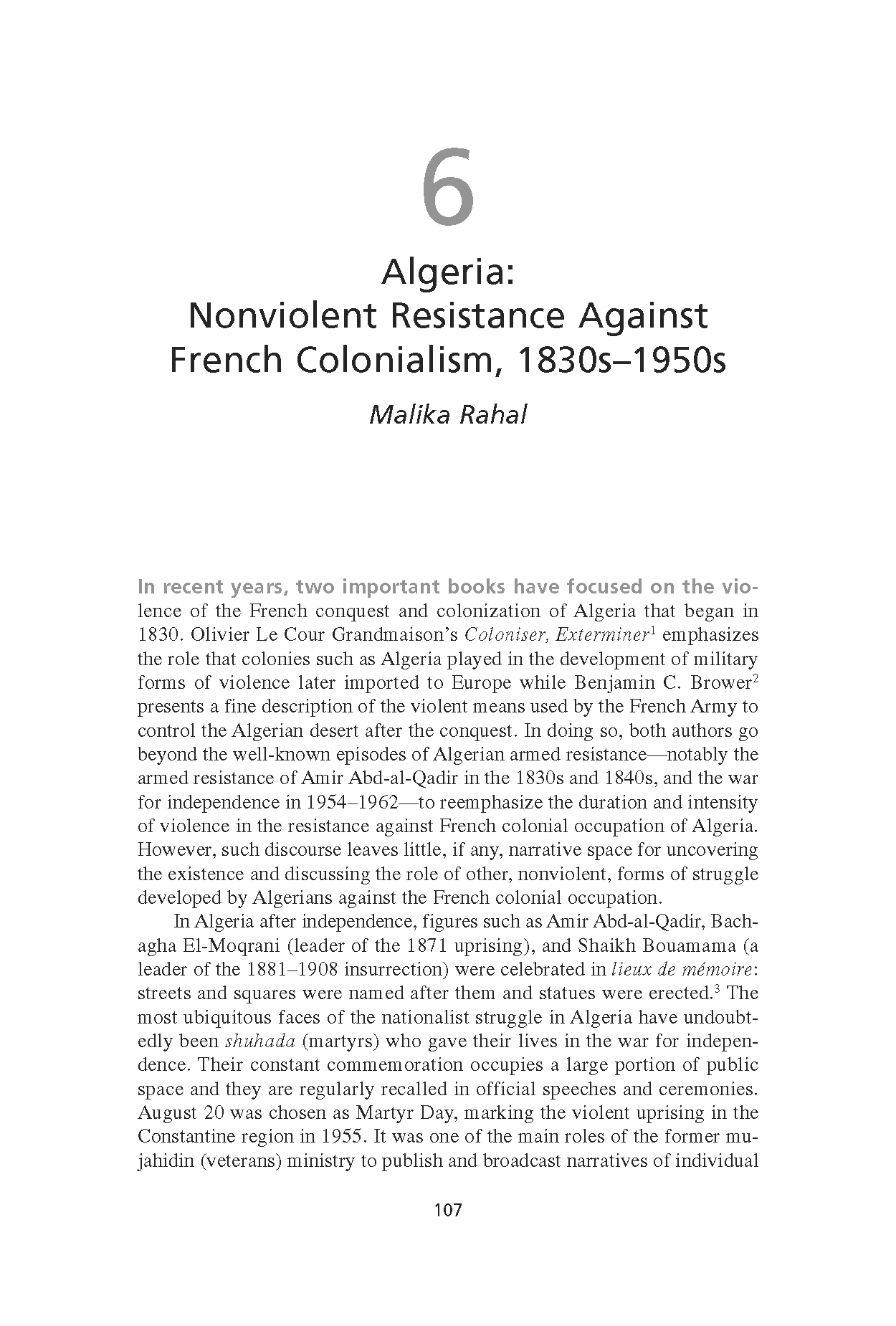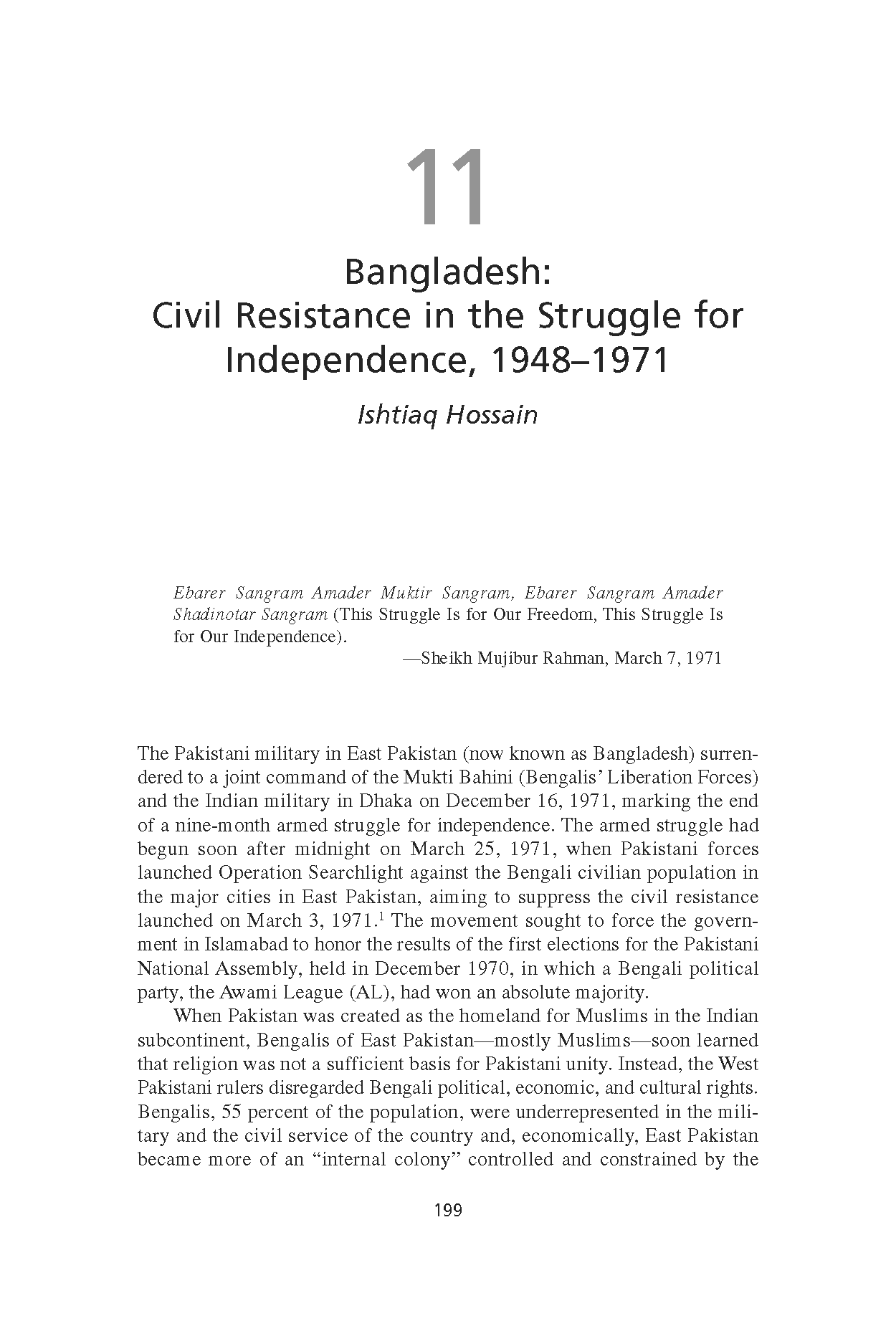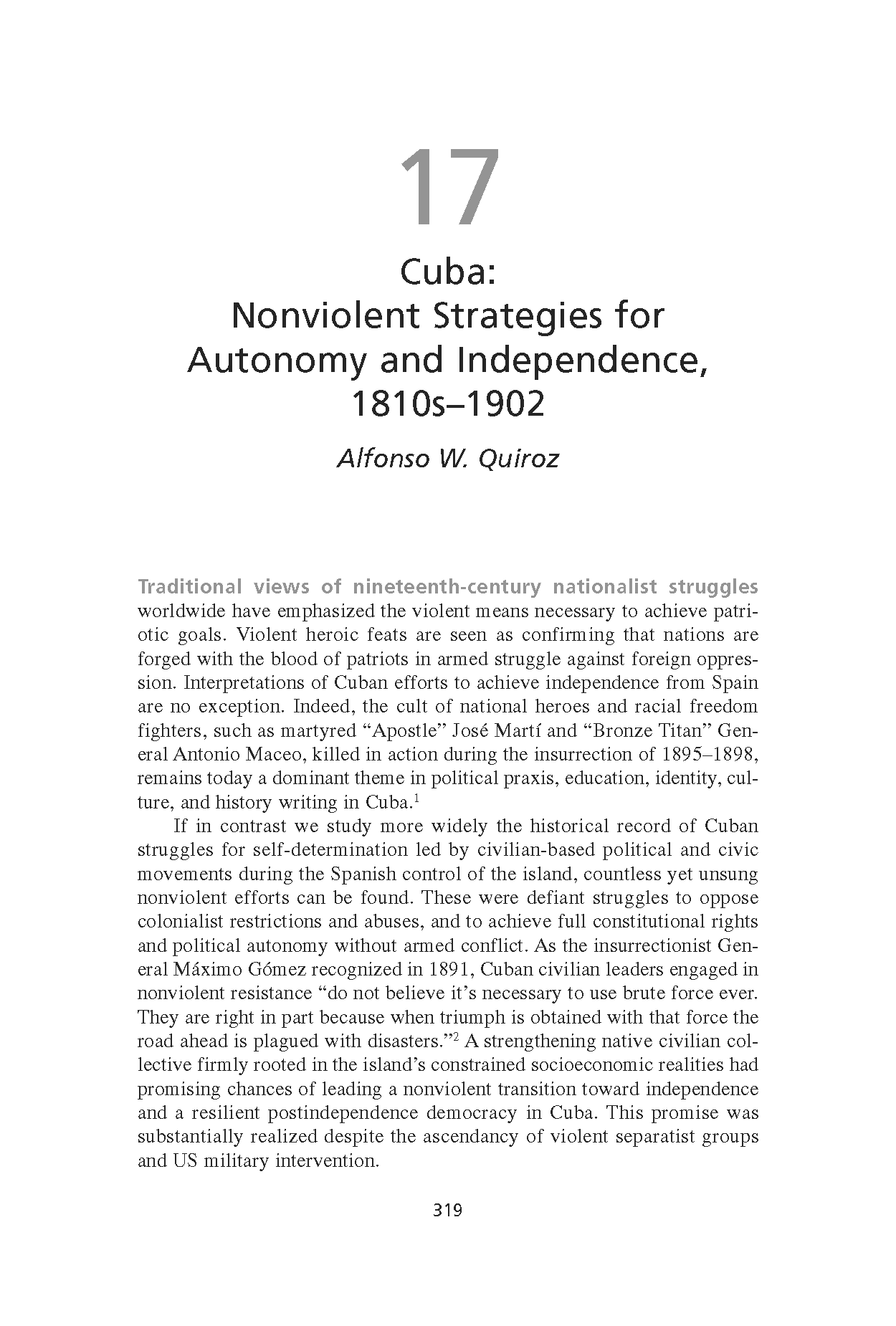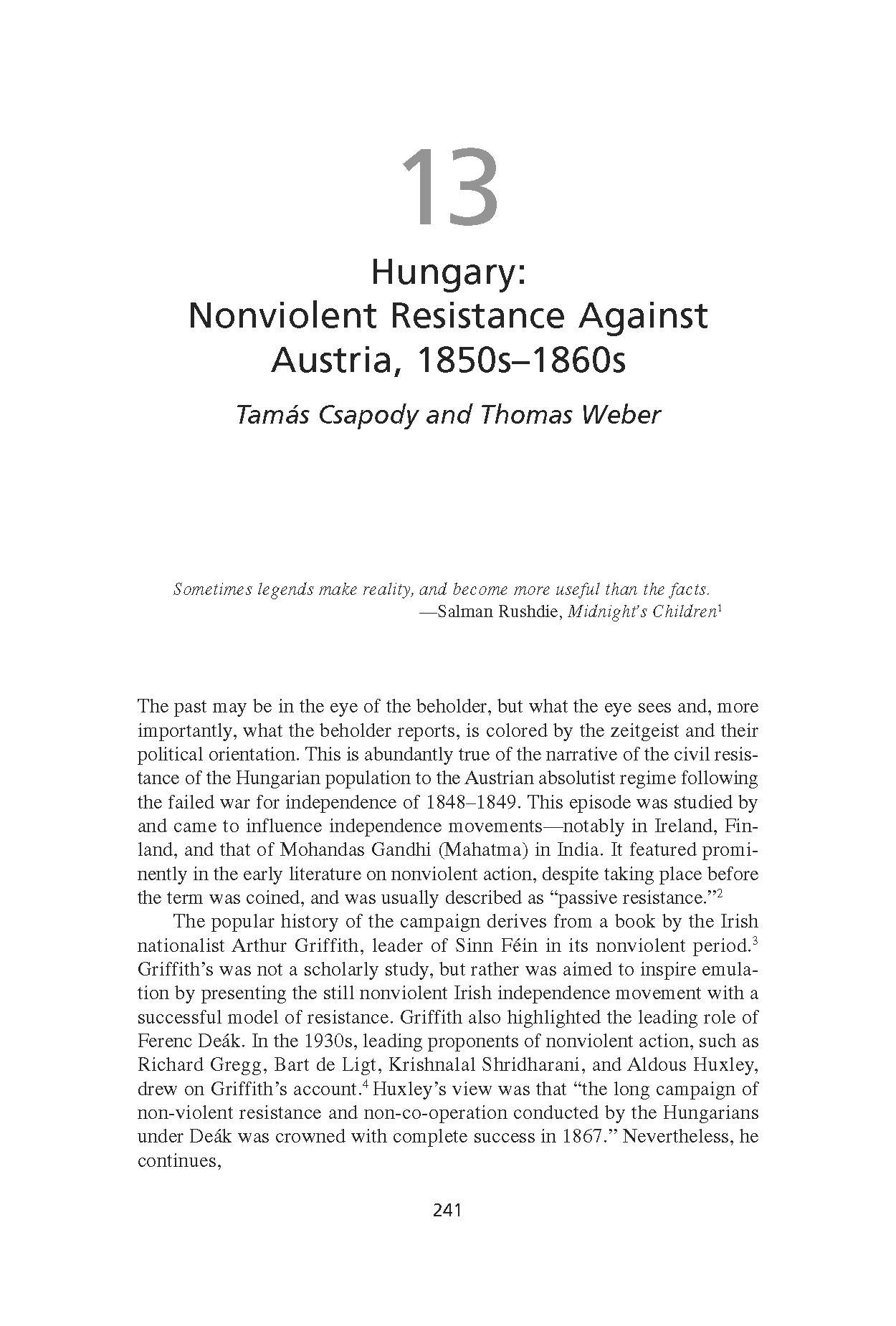Recovering Nonviolent History: Civil Resistance in Liberation Struggles
This unique book brings to light the little-known, but powerful roles that civil resistance has played in national liberation struggles throughout history. Ranging from the American Revolution to Kosovo in the 1990s, from Egypt under colonial rule to present-day West Papua and Palestine, the authors of Recovering Nonviolent History consider several key questions: What kinds of civilian-based nonviolent strategy and tactics have been used in liberation struggles? What accounts for their successes and failures? Not least, how did nonviolent resistance influence national identities and socioeconomic and political institutions both prior to and after liberation, and why has this history been so often ignored? The story that emerges is a compelling one of the agency of thousands and even millions of ordinary people as they used nonviolent force in the course of struggles against foreign subjugation.
All Chapters are currently available for download individually:
Chapter 1: Recovering Nonviolent History
Chapter 2: Identity Formation in Nonviolent Struggles
Chapter 3: Ghana: Nonviolent Resistance in the Independence Movement, 1890s-1950s
Chapter 4: Zambia: Nonviolent Strategies Against Colonialism, 1900s-1960s
Chapter 5: Mozambique: Liberation Myths and Resistance Strategies, 1920s-1970s
Chapter 6: Algeria: Nonviolent Resistance Against French Colonialism, 1830s-1950s
Chapter 7: Egypt: Nonviolent Resistance in the Rise of a Nation-State, 1805-1922
Chapter 8: Iran: Nonviolent Revolts, 1890-1906
Chapter 9: Palestine: Nonviolent Resistance in the Struggle for Statehood, 1920s-2012
Chapter 10: Burma: Civil Resistance in the Anticolonial Struggle, 1910s-1940
Chapter 11: Bangladesh: Civil Resistance in the Struggle for Independence, 1948-1971
Chapter 12: West Papua: Civil Resistance, Framing, and Identity, 1910s-2012
Chapter 13: Hungary: Nonviolent Resistance Against Austria, 1850s-1860s
Chapter 14: Poland: Forging the Polish Nation Nonviolently, 1860s-1900s
Chapter 15: Kosovo: Civil Resistance in Defense of the Nation, 1990s
Chapter 16: The United States: Reconsidering the Struggle for Independence, 1765-1775
Chapter 17: Cuba: Nonviolent Strategies for Autonomy and Independence, 1810s-1902
Chapter 18: Insights into Nonviolent Liberation Struggles
The digital sharing of this book was made possible thanks to Lynne Rienner Publishers. Click here to purchase a hardcopy version of the book.
Lynne Rienner Publishers, 2013
Hardcover ISBN: 978-1-58826-870-9
Paperback ISBN: 978-1-58826-895-2
